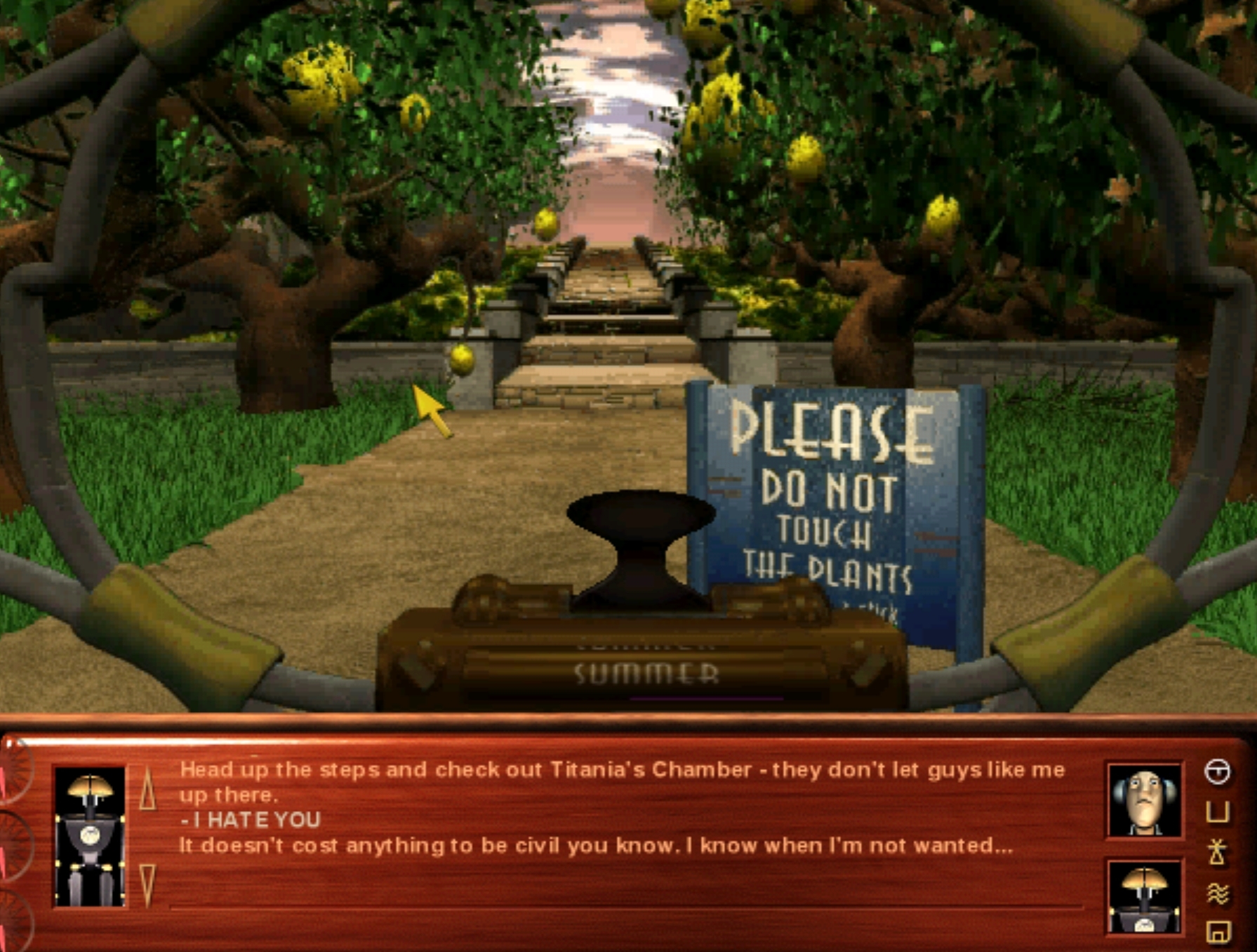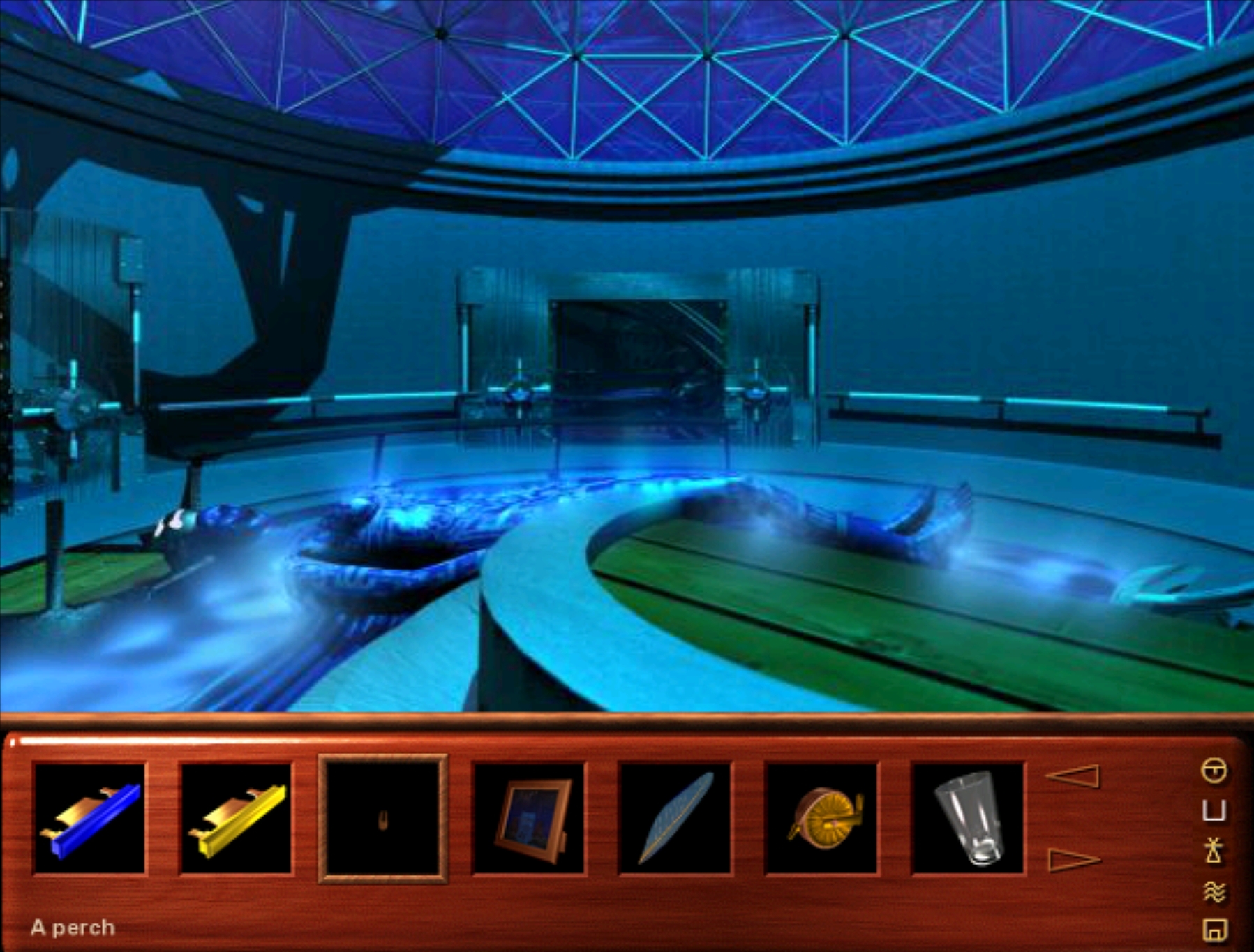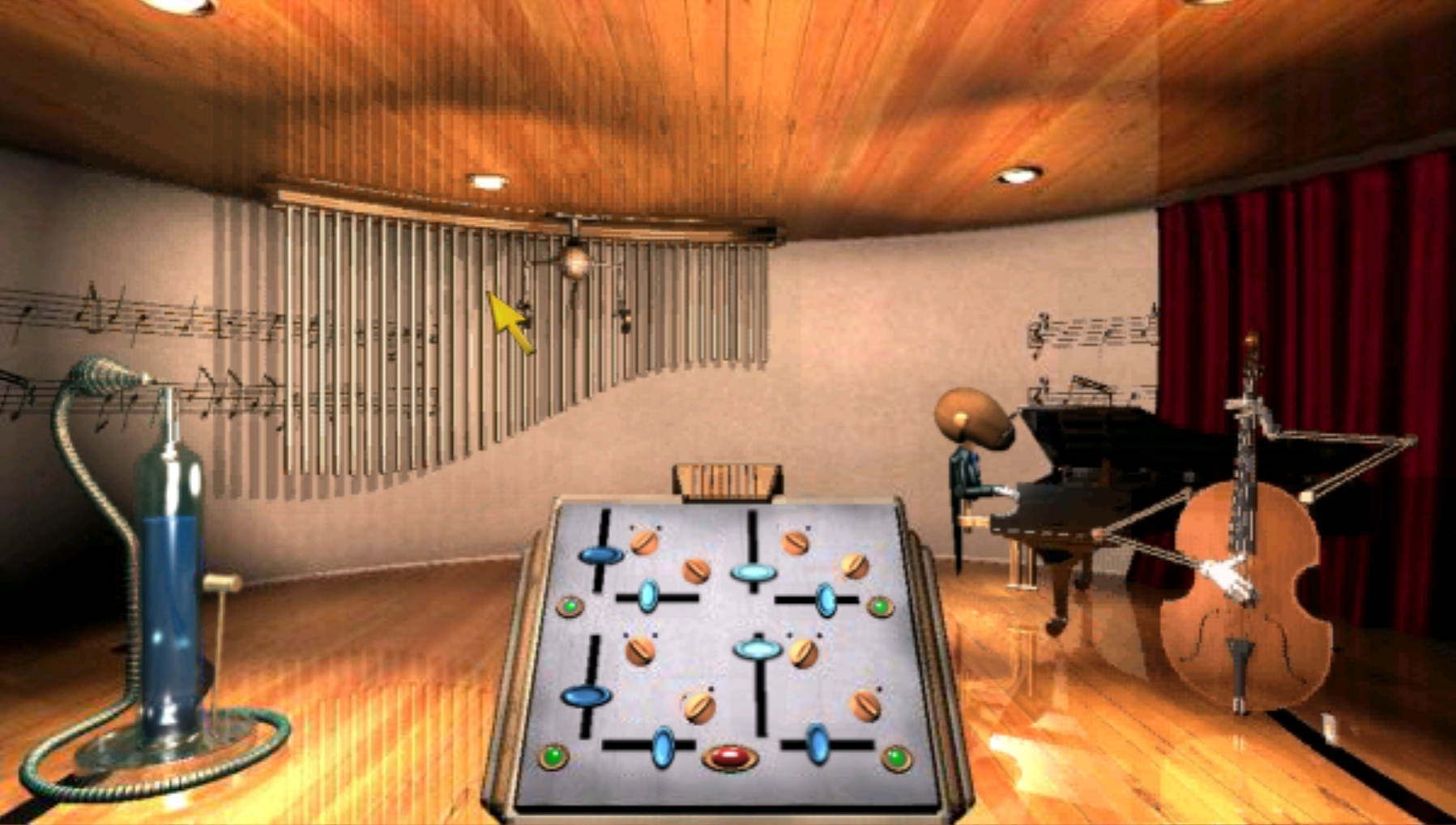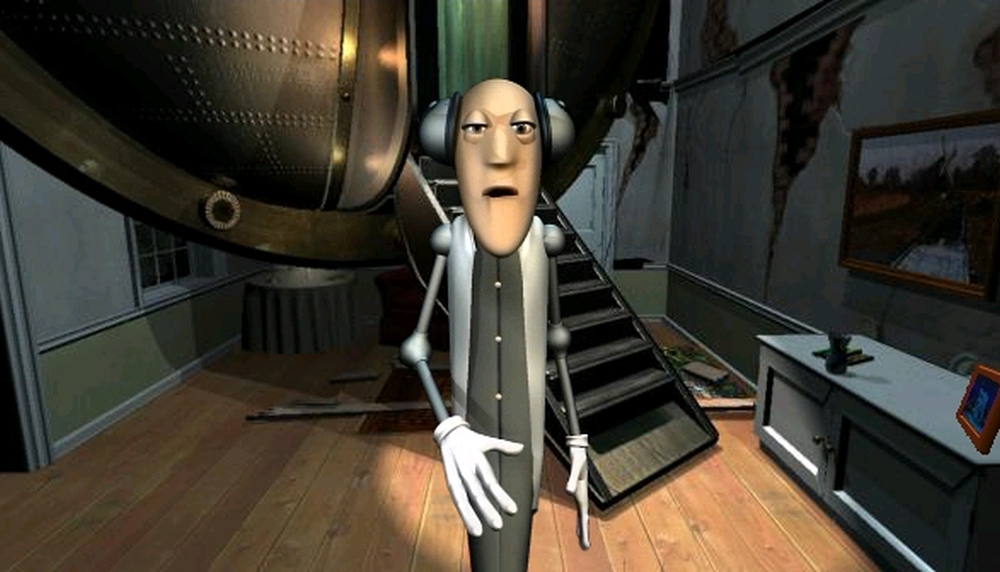I was really rooting for it, too. Primarily because, by some exceptional fortune, I had the opportunity to interview Adams about the game before its release. Yes, it’s a massive namedrop, but you would too, wouldn’t you? It was a telephone interview, for my university newspaper, for which I was the “comedy editor”. I got to talk to Douglas Adams, for what felt like ages, and it was utterly wonderful. He was so astonishingly kind, warm, and most of all, generous, giving answers to questions he must have been asked ten thousand times with verve and wit and no hint of weariness at this 19 year old’s green, green approach. To me at that time, Douglas Adams was the writer of my favourite ever radio series. I had then, and ridiculously still today, never read the books. Which to so many must seem like sacrilege. But to me, who’d been played the original broadcasts by my dad as a boy, it was and always will be a radio programme. Because it was! That’s what it was created to be! Fight me! But Adams was also a comedy writer for other things I cared passionately about. He’d written for Monty Python’s Flying Circus and was a good friend of the Pythons, most especially Terry Jones. I owned a book which featured a picture of the two of them sharing a bath, although grimly I cannot remember what it was. I remember I asked him about that. (I have the cassette of the interview, still, but thank goodness no means to play it.) He wrote for The Burkiss Way, which later was endlessly mean to him, featuring a regular character called “Mister Different Adams”, who only ever said, “I see comedy as a kind of…” with an irrelevant word finishing it, before being rudely cut off. And of course there was that text adventure based on H2G2. And I believe he wrote some Doctor Who too. Adams was peripheral to so much of the most important comedy of the ’60s and ’70s, before he even started on his masterpiece. He was somehow never an author to me, but gosh I was so excited to speak to him.
He was really excited about the game! I don’t know if this was just his doing his job well, or if he somehow believed it was all going to come together in the remaining two months before release, or perhaps it was that more traditional issue of being so close to a project that he could no longer see it for what it was. So I was so excited about the game too! And of course what I played in 1998 was barely playable at all. Starship Titanic was to be this extraordinary marriage of old and new, text parser and modern shiny graphics. An adventure game where the characters within it could converse naturally with you, in recorded speech! Oh my goodness, how did anyone even allow $2m to get spent on such an obviously impossible idea? And yet, they really tried. Experts in the fields of language interpretation worked on this, teaching the game’s code to understand the nuances with which players would enter sentences. The bots within would remember their conversations such that they’d not repeat themselves too often, or recall earlier chats. At least 16 hours of dialogue was recorded by proper actors, with text-to-speech rejected because it sounded “like semi-concussed Norwegians” (sorry Norway). Terry Jones (RIP) would relentlessly squawk at you in the form of a parrot. But of course as soon as you typed stuff in, nothing worked. If you were ever understood it felt so extraordinary, and then came crashing down the very next line when you received one of the many, many variants on, “I don’t understand.” How could it ever have been any different?! 16 hours of dialogue would barely be enough for a single minor character! Oh dear.
It also didn’t help that the game was a Myst-clone. Adams had played Myst and its sequels, and rightly pointed out they had no bloody story. So he wanted to make an equivalent that did. And in doing so, the developers somehow managed to extract all the very most awful things about that format, and none of the grace. Movement was like a parody of Myst, each directional click seeing the camera idiotically swooping through multiple unfathomable transitions, looping and spinning and often seeming to pass through walls or stairs. Trying to comprehend where you were compared to where you’d just been was dizzying. And though it certainly was pretty in its time, it looks atrocious today, a blurry smeary mess, featuring ghoulish characters that look like they’re from a 2005 Christian kids animation. But oh boy, the worst thing about it is the puzzles. It’s awful from the very first moment of freedom. Which is a shame, after its excellent start. You begin in a room in a regular house, with a computer on a table. Next to it is a CD-ROM, so you open the drive, drop it in, and then the hull of the Starship Titanic crashes through the roof of your house. I love this! It’s how a Terry Gilliam movie would have started it, like Time Bandits’ bedroom. You’re then met by a robot who introduces the parser in a barely comprehensible way, explains that all the robot staff of the Titanic have gone a bit loopy, and then dumps you in the main lobby of the starship with no clue what anything is about. There’s then another sign of such lovely imagination! You’re told to speak to the robot on the desk, but all that’s there is a bell to ring for attention. Ding it, and it lifts up revealing itself as the head of a slumbering automaton. Marvellous stuff. She asks you lots of questions that you answer for her mocking amusement, and then you’re given your room number. So, er, go to your room? Except no, that’s not possible. And you’re already stuck. Because nothing - NOTHING - vaguely hints at what you should do next.
Of course the answer is to pick up Terry Jones’s parrot from one of the few available rooms, then when he eventually flies off, you get a feather. A feather! So of course you now know to… No, there’s nothing. What to do with the feather? Well, it’s to go back to the lift you arrived in, but this time press an unmarked third button to go to the unmentioned Bilge Room, where there’s a large robot called Succ-U-Bus. There are smaller versions of the same in every other room, which you’re informed can “send” and “receive”, but what, and why, and when, doesn’t appear important. Anyway, head to the never alluded to big one, and it will cough and splutter at you, and then tell you to find “Mother” in the basement. This is Mother. There isn’t a basement. My hair is in clumps between my fingers. Anyway, so of course what you need to do is put the feather in the bin in front of the machine and then click the Send button. AFTER THIS, it will inform you that it doesn’t like feathers, and then cough up a human corpse. You can’t look at the corpse. You can’t ask about the corpse. But if you click on it you’ll be given two components for computers, that aren’t explained in any form…
That’s Starship Titanic. There were positive reviews when this game out. PC Zone gave it 91%. This is a game whose parser is so dreadful that replying to a robot who’s just greeted you with “Hello” can receive the response, “Without wishing to appear rude, I do believe there are other things you could be thinking about.” Which is to say, “I don’t understand” with more words. “What is your name?” I ask. “Really?” he replies.
Did you know that you can send items by Suc-U-Bus to specific locations by dragging their room code from your inventory and dropping them on the bot, to no confirmation that it’s done anything, before you click Send? No? Because the game doesn’t mention it. Which is a shame, since it’s crucial to solving puzzles, like the one where you’re supposed to figure out you need to send the parrot to your new room so it will eat some pistachios (that it apparently sometimes alludes to but didn’t for me), under which you’ll find an object the game has never suggested you should be looking for. Did you know that the dials on the far left of the bottom section of the screen each represent information about the bot you’re talking to? No! Because it’s never mentioned in any way! It’s not in the “manual”, which is a very amusingly written collection of faux articles containing cryptic references to parts of the game, but no actual instructions. And yet, despite this, knowing it is crucial to solving a puzzle! Or the bit where you solve a puzzle by finding your way to a specific room based on a room code you see on a TV channel, and when you get there you’re supposed to notice that one of the 67 lights in the room is an almost imperceptibly difference shade. And on and on and on it goes, unexplained puzzle after never-referenced item, impossible without either infinite time or a walkthrough. But most tragically of all, it fails at its very initial goal: to add character and life to the Myst format. The ship is barren but for these irritating robots, none of which understand more than 3% of anything you might say, and the whole place feels woefully empty. And for a game with apparently so much dialogue recorded, it somehow has nothing approaching a story!
Of course no one has ever been better at stringing together a series of disparate events into something that models a narrative than Adams. But none of that is here. The disparate events are meaningless tasks, the over-arching tale being that you’re, um, fixing a broken ship? To do so you’re forced to traipse back and forth across vast acres of empty space, over and over and over, with no joy to motivate your way. Even Terry Jones’s parrot becomes intolerably annoying after only a short while, while John Cleese’s peculiar cameo as a counting down bomb isn’t even a relevant part of the game, and again serves only to irritate the player. Which all adds up to, most shockingly of all, a game that simply isn’t funny. Not that its jokes fall flat, although those there often do, but for the most part there just aren’t any. It’s all empty space. This is all so very sad. And I’m sad all over again to rediscover that Starship Titanic remains as dreadful today as it was in 1998. I had hoped that perhaps time and a lack of expectation might have tempered things somewhat, but disappointingly it’s not so. It’s just a colossal mess, and it seems such a waste.
It also sort of suits Adams, in many ways, I think. He seemed the most extraordinarily flighty and distracted of people. He had so very much to say about so very many things, right up until it came to writing them down. His line on deadlines is infamous, but I also see a man who struggled to escape his one core idea. Even Dirk Gently was so easily overlaid with Hitchhikers that his final unfinished novel was one he’d considered could be an entry in either! Starship Titanic was itself an embellishment of a throwaway line from Life, The Universe And Everything. He’d spent a significant proportion of his life trying and failing to adapt the radio series into a movie (until even more disappointingly, after Adam’s death Garth Jennings ‘succeeded’ at turning it into one.) And there was that one rather unsuccessful 1980s H2G2 TV series (he told me that Zaphod Beeblebrox’s second head had worked beautifully until moments before filming started, and could never be fixed). Perhaps it would have been inappropriate for Starship Titanic to have come together? Bah, no, of course not. What a pleasure it would have been for it to be his surprising swansong, before he was so cruelly taken far too young. So yes, sad. But I got to do that namedrop, so there’s that. And I didn’t even mention that I also met Terry Jones. And hey, a whole bunch of Hitchhiker’s Guide is being repeated on Radio 4 Extra at the moment, and it’s utter gold.
Can I still play Starship Titanic? Yes, it runs pretty well considering. Both Steam and GOG launch it via SCUMMVM, and you’ll definitely need to get hold of the manual supplied by either to solve some of the puzzles. Plus look up an image of the back of the original box, as that’s pretty vital too. Should I still play Starship Titanic? Unfortunately, no. It’s stupendously awful, as much as I so desperately wish it were otherwise. John Walker was one of the original creators of RPS, before he was fired for being too great. He now runs Buried Treasure, a site dedicated to unknown indie games. You can support his Patreon!







